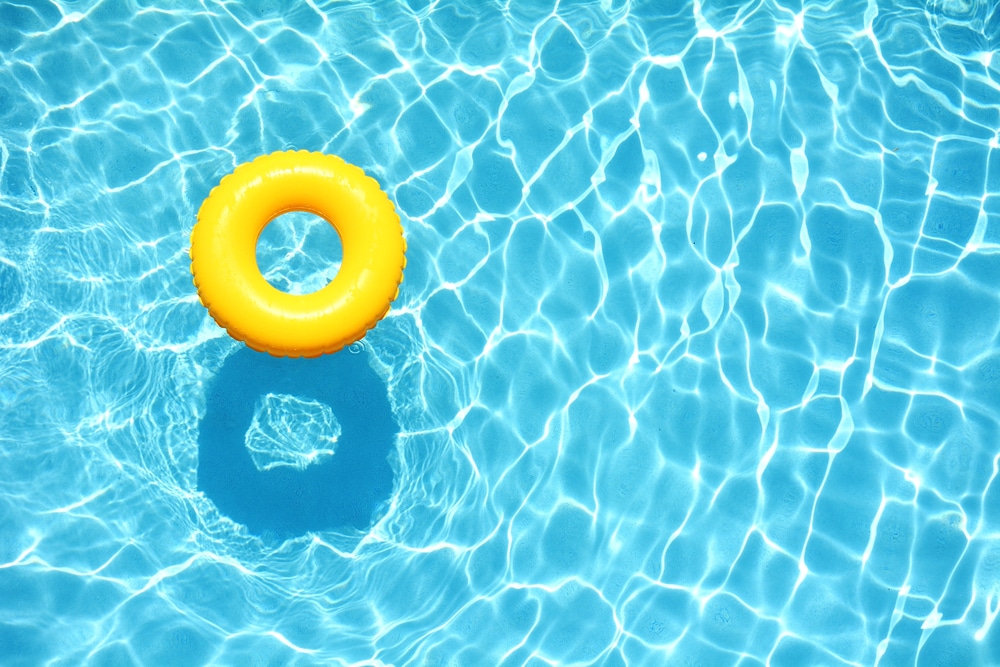You haven’t used your pool for some time, and you walk next to it and spot some black substance in it; you realize that you have neglected it so much that algae form in it. Now you need to clean it and we are gonna show you how to do it.

Removing Black Spot Algae
When you think of algae, what comes to your mind? Probably something green. Cyanobacteria, or black algae, is a type of bacteria. Blue-green algae is another name for it. The bacteria, on the other hand, can seem black. Are black algae bad for you? Yes, it is possible.
What Is It?
Anyone who swims in your pool can become sick from black algae, and it’s considerably worse if you drink infected water. As a result, it’s critical to recognize black algae as soon as possible and act quickly to eliminate them. But what do black algae look like? Unfortunately, many types of black spot algae can manifest in your pool but usually, It looks like mold. You may have black algae if you observe a cluster of tiny black specks or large clumps of mold appearing on your pool surfaces. They can also appear blue-green at times.
How to Tell If You Have It
Here are a few ways to tell whether your pool has black algae. For starters, your pool’s surface has black or blue-green blotches and clumps with elevated heads. They don’t float on the surface of the water. The second reason is that it forms on rough or porous surfaces. Pools with fiberglass or vinyl liners rarely develop black algae. It prefers porous surfaces like concrete, plaster, and gunite pools to grow in. Number three, it’s difficult to brush off the wall with a standard pool brush or even a metal algae brush. Number four, even though it will take some extra effort, it can be scraped from the pool’s surface.
How To Clean It
The treatment of black algae differs from the treatment of green algae. It truly necessitates more effort and perseverance. It is, nonetheless, possible to kill.
So, before you begin, gather the necessary materials. Any retailer selling Pool or jacuzzi accessories should have you covered. Calcium hypochlorite shock, or Cal-Hypo shock, test strips for a liquid test kit, an algae brush, chemical-resistant gloves, safety goggles, chlorine tablets, a telescopic pole, and a filter cleaner. You’ll also need a backwash hose, filter sand, DE powder, or a replacement filter cartridge, depending on the type of filter you have.
Clean the Filter
The first step is to clean the filter. If your pool has black algae, your filter probably has black algae as well. You can just backwash your ordinary DE filters or rinse your cartridge filter if you only have a small number of black algae. If you have a lot of black algae, though, you should use filter cleaning instead of plain water. To get rid of any bacteria, you may wish to change the filter medium or cartridge.
Test and Balance Your Water
The second step is to test and balance the water. Pay special attention to alkalinity, pH, and sanitizer. Between 100 and 150 parts per million should be your alkalinity. The pH level should be between 7.4 and 7.6. Also, your chlorine level should be between 1 and 3 parts per million.
Brush the Pool
Brush the pool in the third stage. Brushing black algae loosens it up enough for the chlorine to kill it. Stainless steel is the best option. If you have a fiberglass or vinyl-lined pool, use a nylon bristles brush to clean it.
Scrub the black algae spots in step four. You’ll probably still see some black algae spots in your pool, no matter how well you brushed it. To scrub the remaining algae patches, we recommend using chlorine pills. This only works in pools made of concrete, plaster, or gunite. Firstly, you’ll need to put on chemical-resistant gloves and protective glasses.
Break-in half a three-inch chlorine pill. Hold it firmly in your hands and scrub the black algae with the broken edge. Don’t worry if you don’t get every last speck of black algae off the pool’s surfaces; you’ll brush the pool again in the next stage.
Shock the Pool
Sixth step: quadruple shock the pool. You need to kill anything that’s floating in the water now that you’ve brushed off as much black algae as you can. A regular dose of shock won’t destroy black algae, thus calcium hypochlorite shock is the way to go. To calculate the correct dose for your pool’s volume, follow the manufacturer’s instructions and multiply by four for a quadruple shock.
Step seven is to start the pump. To diffuse the shock, run the pump for 24 hours. Step number eight, brush the pool. You should brush the surfaces three to four times throughout those 24 hours when the chlorine level is at an all-time high. Cleaning the filter is the ninth step. Simply backwash or rinse your sand or DE filter or cartridge filter now. Step ten, if necessary, shock the pool again. You’ll want to shock it again if there are any algae left.
When you start to clean your pool, you may become deterred by all the work you need to do, but you should not be, just follow these steps and you will have your pool back. Hopefully, these steps will help you clean your pool, and remind you to maintain it in the future.

